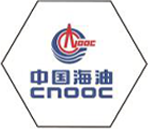
Aug . 20, 2024 23:08
Back to list
Pressure Relief Valve Selection and Maintenance Guide for Optimal Performance
Understanding Pressure Relief Valves A Key Component in Safety Systems
Pressure relief valves (PRVs) are crucial devices designed to manage and control the pressure within various systems, particularly in industrial applications. They serve as a safety mechanism to prevent pressure from exceeding predetermined levels, thereby protecting equipment and personnel from potential hazards. Understanding how these valves function and their importance in various industries can help in appreciating their role in maintaining operational safety.
What is a Pressure Relief Valve?
A pressure relief valve is an automatic device that releases pressure from a system when it exceeds a certain threshold. It is engineered to open at a specified pressure, allowing excess fluid or gas to escape safely. Once the pressure drops back to a safe level, the valve automatically closes, preventing further discharge. This cycle is crucial for systems that operate under high pressure, such as boilers, pipelines, and storage tanks.
Types of Pressure Relief Valves
There are several types of pressure relief valves, each suited to specific applications. The most common types include
1. Spring-loaded Valves These are the most widely used. They utilize a spring mechanism to hold a disk in place against a seat. When the system pressure exceeds the set point, the spring compresses, allowing the disk to lift and relieve pressure.
.
3. Direct-acting Valves These are simpler designs that react directly to the system pressure. They are often used in smaller applications where precise pressure control is necessary.
صمامات تخفيف الضغط

4. Blow-off Valves Commonly used in gas systems, these valves vent excess gas to the atmosphere upon reaching the set pressure.
Importance of Pressure Relief Valves
The significance of PRVs cannot be overstated. In many industries, including oil and gas, chemical processing, and power generation, the failure to control pressure can lead to catastrophic events, including explosions, equipment damage, and even loss of life. By maintaining the pressure within safe limits, PRVs contribute to the integrity of the system and protect against potential failures.
Moreover, regular maintenance and testing of these valves are imperative. Over time, wear and tear, corrosion, and other factors can affect their performance. Consequently, periodic inspections and testing ensure that the PRVs are functioning correctly, thereby safeguarding the entire operation.
Regulatory Standards and Compliance
Various regulatory bodies set standards and guidelines for the installation and maintenance of pressure relief valves. These regulations ensure that industries adhere to safety protocols and that PRVs are appropriately sized and installed according to the specific requirements of the system. Compliance with these standards is not only crucial for safety but also for legal liability and insurance purposes.
Conclusion
In conclusion, pressure relief valves play an indispensable role in the safety and operational efficiency of many industrial systems. Understanding their function, types, and importance is essential for professionals working in environments where high pressure is a factor. By prioritizing the proper maintenance and adherence to regulatory standards for PRVs, industries can effectively mitigate risks and ensure the safety of both personnel and equipment. As technology advances, the development of more sophisticated PRVs will further enhance the safety mechanisms in place, paving the way for safer industrial practices.
Latest news
-
Safety Valve Spring-Loaded Design Overpressure ProtectionNewsJul.25,2025
-
Precision Voltage Regulator AC5 Accuracy Grade PerformanceNewsJul.25,2025
-
Natural Gas Pressure Regulating Skid Industrial Pipeline ApplicationsNewsJul.25,2025
-
Natural Gas Filter Stainless Steel Mesh Element DesignNewsJul.25,2025
-
Gas Pressure Regulator Valve Direct-Acting Spring-Loaded DesignNewsJul.25,2025
-
Decompression Equipment Multi-Stage Heat Exchange System DesignNewsJul.25,2025

